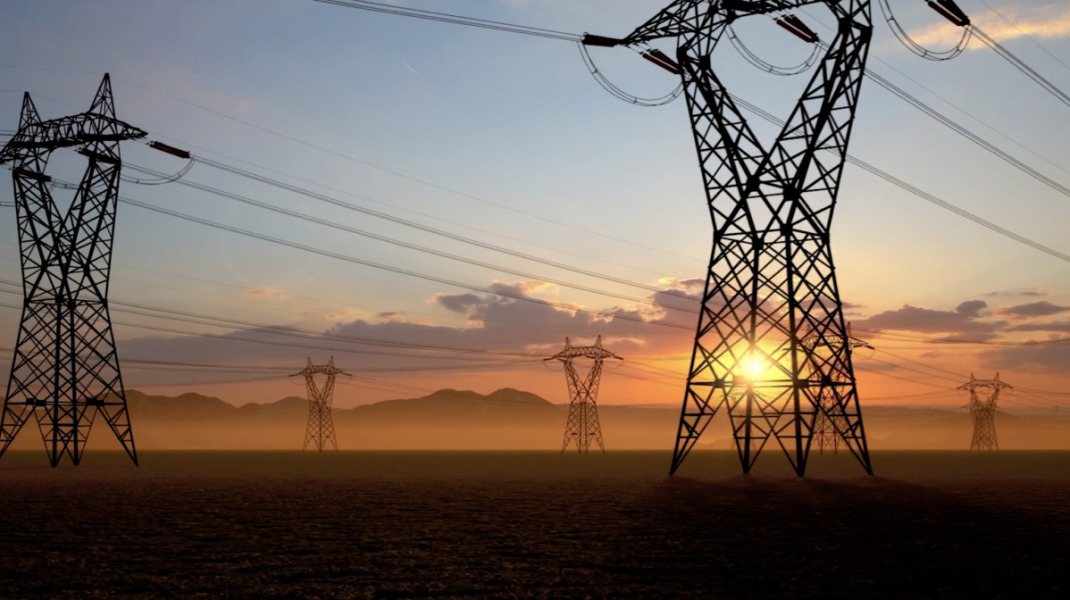Debottlenecking Transmission through Energy Storage in the Pacific Northwest

Executive Summary
- Transmission is a leading bottleneck of the clean energy transition in the Pacific Northwest. The electric load in the region is expected to increase by 6GW over the next five years and that further stretches the limits of the transmission system to mainly move power from generation centers east of the Cascades to the load centers on the west.
- With its materially shorter permitting, development, and construction timelines, and smaller land footprint, energy storage is uniquely positioned to mitigate existing or new transmission constraints in the near term.
- Storage as a Transmission Asset (SATA) can help utilities manage the uncertainties and complexities of expanding the regional transmission grid, utilize existing transmission capacity more efficiently, maintain electric system reliability, and ultimately facilitate the clean energy transition.
Learn how brightnight is using battery storage capacity to optimize existing transmission infrastructure in the pacific northwest
A Growing and Complex Transmission Challenge
The US power transmission system needs significant upgrades, expansion, and investments to meet the challenges facing the electric sector today. The sector is dealing with a complex set of issues, from integrating rapidly growing clean energy sources while traditional fossil fuel power plants are retiring, to meeting the growing electric load due to increasing industrial demand, transportation and building electrification, oppositions to transmission siting and many other regional and non-regional challenges. Furthermore, the increasing frequency of extreme weather events is adding to this challenge. Together, these factors require significant upgrades and investments in the transmission system to keep the electric grid reliable and resilient. According to the US Department of Energy (DOE), the US needs 47,000 GW-miles of new transmission by 2035, a 57% growth relative to today’s transmission system. [i]
The Pacific Northwest’s Unique Challenges
The Pacific Northwest (PNW) region exemplifies these challenges, while additionally exhibiting unique hurdles. States such as Washington and Oregon have renewable portfolio standards with 100% zero-emissions goals by 2045/2040, respectively. Large utilities such as PacificCorp, Puget Sound Energy, and Portland General Electric have their own zero-emission decarbonization goals. Yet, electric load in the region is projected to increase 20% over the next five years, mostly due to new industrial demand including the growing datacenter and AI load and electrification. This equates to around 6,000 megawatts peak load increase in the next five years[ii]. At the same time, changing river flows and hydro operational restrictions arising from endangered species regulations are impacting hydro production. Additionally, more frequent extreme temperatures and wildfires risk are raising concerns for reliability and resource adequacy. For example, regional weather events such as the west-wide heat wave in 2020 and the winter storm in 2021 created challenges for the load serving entities in the region in planning and operating the system.
Transmission Constraints are Central to These PNW Challenges
The locational separation between major load centers and generation centers in the PNW accounts for an even more pivotal role for the transmission grid. A disproportionate amount of Pacific Northwest load resides West of the Cascades range, with Bonneville Power Administration (“BPA”) as a critical transmission provider feeding lines across the Cascades to move power not only from the legacy Federal Columbia River Power System resources but also from growing solar and wind resources situated East of the Cascades. Due to the climate and the topography, the land East of Cascades happens to be rich in solar & wind resources, and as more projects are developed, they will lead to a transmission system strained well beyond its original design. BPA is proposing over $2 billion in transmission projects to support adding thousands of megawatts of renewable energy to Oregon and Washington State’s grids and help these states meet their 2030 decarbonization goals. Six of the projects would reinforce existing major BPA transmission lines that run from east to west, allowing the flow of energy from the east side of the region to load centers such as the Puget Sound area and Portland.[iii]
While adding the required transmission capacity is highly capital intensive, funding is not the only issue. Building transmission lines takes a long time, especially for interregional transmission lines, due to the complicated regulatory, stakeholder processes. Expansions to BPA’s system can take years to plan, permit, and construct with timelines often exceeding 10-15 years, especially given the varied historical land interests that need to be respected, including in tribal, state, federal lands. Some of the major transmission projects that increase power transfers across the Cascades have consistently been identified in BPA’s Transmission service request studies and expansion process (TSEP) for the last eight years awaiting commencement of the project design, with 2022 being the first year where some of these upgrades are finally getting funded for preliminary engineering. The recently passed US debt ceiling bill could alleviate some barriers and reduce permitting timelines but it will only incrementally improve the regions’ transmission capacity issue with many challenges remaining. Even with these enhancements, there will not be sufficient capacity to meet the targets for the region. The planning of these additions has been conservative and would suffer from both more aggressive plans on the resource and load side as well as the issues with how the operations of those facilities will change.
Storage Provides a Solution with Increased Speed, Certainty and Flexibility
So, the key question to ask is: Are there other alternatives to meet the regional power demand and the need to integrate more clean energy resources than waiting a decade for transmission projects to be approved and built? The good news is there are alternatives that could bring more supply much sooner and with increased flexibility and greater certainty. Energy storage can help system operators in the Pacific Northwest (and nationally) alleviate transmission constraints today and accelerate the clean energy transition and help increase the utilization of both existing and new transmission infrastructure planned in the region.
Here are the three advantages storage offers:
- First, storage projects can be built much faster than transmission lines. Obtaining permits for battery energy storage projects is less complicated than for transmission lines because of significantly less environmental footprint. Large transmission lines can impact hundreds of miles of land, involving a diverse set of communities, natural resources, and culturally sensitive areas. In comparison, large battery storage projects only require a small amount of land (1 acre per about 25MWs assuming a 4-hr duration), reducing local and regional impacts and allowing for an accelerated and low-risk development process.
- Second, energy storage provides an option to utility companies for managing the uncertainties and complexities of the regulatory and market risks for building transmission lines. The need for transmission projects is determined by various factors such as projected load growth, achievable levels of energy efficiency, and distributed generation, all of which are inherently uncertain. The regulatory approval for transmission development is also uncertain due to complexity in the stakeholder process. Because of the binary nature of transmission projects, (i.e., once they are built, it is extremely complicated to increase the capacity of a transmission line) the decision to invest in a transmission project is inherently risky[iv]. In comparison, storage project investment offer a more modular and scalable solution, and the capacity and duration requirements of the storage systems can be periodically evaluated and adjusted based on system needs. Investing in storage as an alternative to new transmission lines or as a solution in parallel with the pursuit of new transmission lines allows utilities to defer larger transmission infrastructure deployment decisions to a later point after market drivers become more certain and have a higher probability of solving specific constraints in the near-term while helping them to address the congestion issues on the grid today. In the uncertain regulatory and market environments, this optionality and flexibility is highly valuable.
- Third, energy storage improves the utilization of existing transmission capacity with its energy shifting capabilities. Through siting storage near critical load pockets and downstream of congested lines, n+1 contingency for the congested transmission can be partially remedied by such asset. This allows for higher reliability and ensures maximum utilization of existing transmission while new transmission is being planned and built. Meanwhile, not all congestion on the transmission system is operational. In fact, a lot of it is driven contractually through transmission rights that are infrequently exercised. Storage helps to better utilize contractual transmission capacity, facilitating structuring of more complex around-the-clock green contracts helping move clean megawatts at lower cost. Optimized siting of energy storage plays an important role in maximizing such benefits.
The Pacific Northwest region is experiencing unprecedented supply-demand conditions as part of its clean energy transition. Transmission constraints are one of the key challenges the region is expected to cope with for the next decade. Using energy storage for transmission benefits can play an important role in helping utilities keep the electric system reliable while managing the uncertainties and complexities of upgrading the regional transmission grid to accommodate and accelerate the adoption of renewable resources – and ultimately helping accelerate the clean energy transition in the region.
[i] This assumes moderate load and high clean energy assumptions “in line with the future power sector enabled by all currently enacted laws,” https://www.energy.gov/sites/default/files/2023-02/022423-DRAFTNeedsStudyforPublicComment.pdf
[ii] https://www.pnucc.org/wp-content/uploads/2023-PNUCC-Northwest-Regional-Forecast-final.pdf
[iii] https://www.bpa.gov/about/newsroom/news-articles/20230713-bpa-takes-major-step-to-advance-transmission-projects-for-reliability-an
[iv] More aptly transmission projects need more time for all the risk’s associated with them to be pampered out between the varied stakeholders involved.
Talk to BrightNight
For questions about BrightNight’s Pacific Northwest Portfolio, our storage solutions, or how we’re optimizing renewable power in order to maximize the value of existing transmission infrastructure, please reach out to our team.
-
Contact

-
Contact

-
Contact

